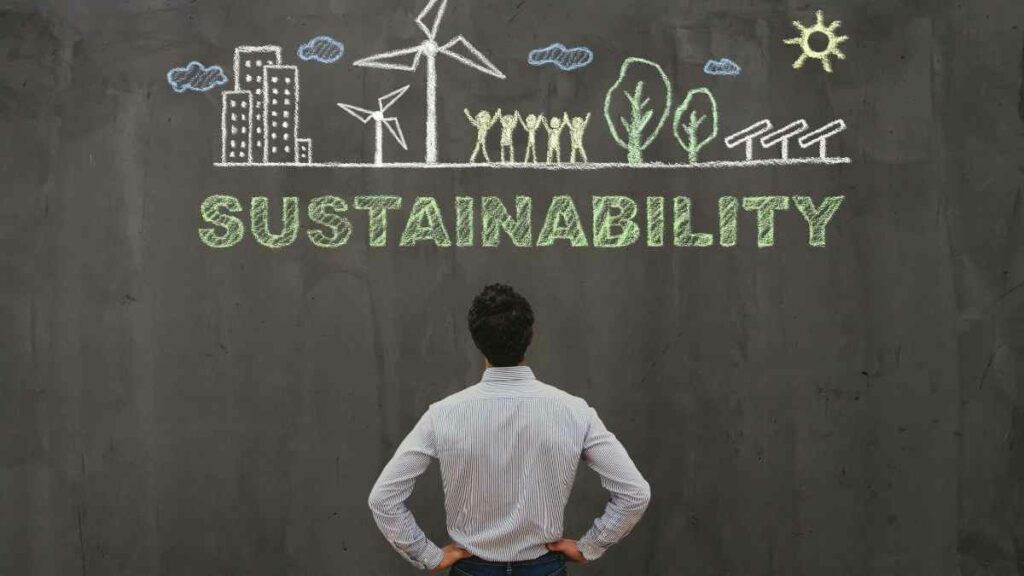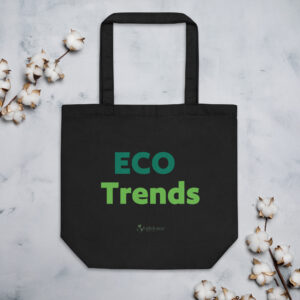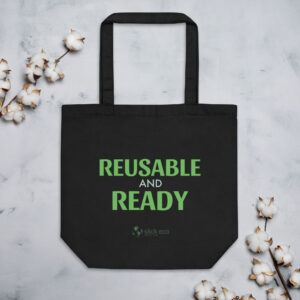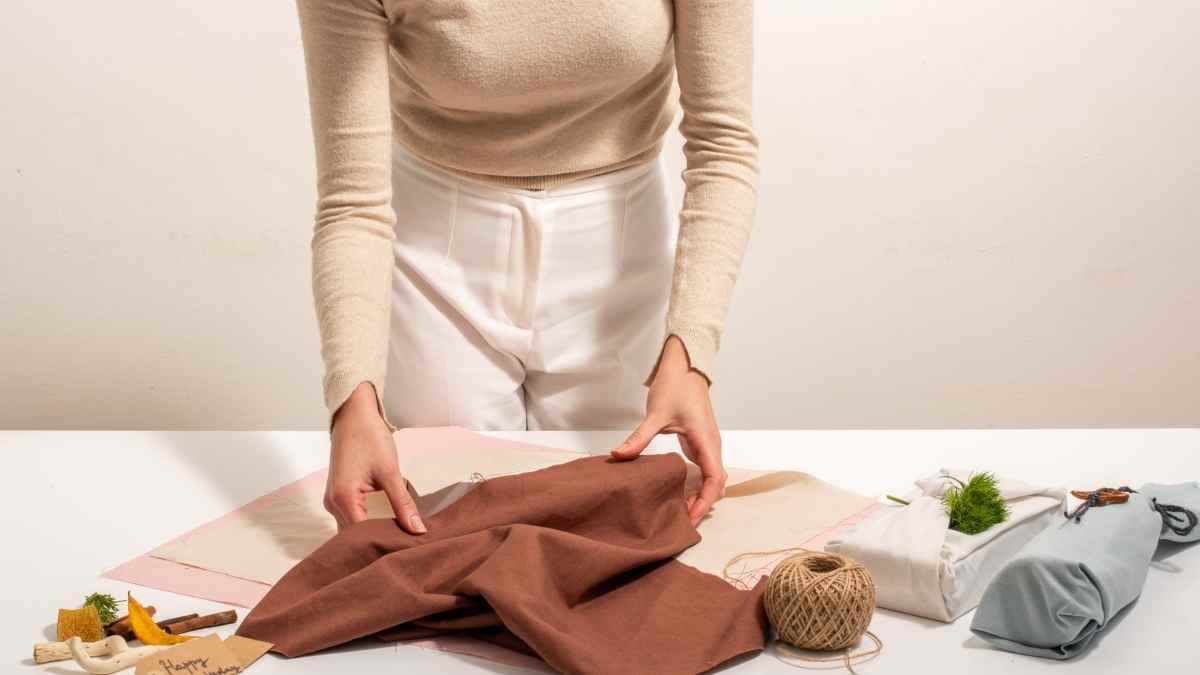Fashion can improve one’s quality of life; thus, it’s essential to do it right.
Sustainable fashion, sometimes known as slow fashion, is a trend in which fashion stylists, producers, and consumers work together to promote industrial changes.
This shift aims to achieve environmental balance and social fairness.
In this article, we’ll look at the various ways in which sustainable fashion helps the environment.
How Exactly Does Sustainable Fashion Benefit The Environment?

With the growth of awareness among consumers, the sustainable fashion industry is increasing at a stable rate. All action matters, and it isn’t too late to become involved!
Evaluate the ethically fashionable options. Aim for higher-quality, longer-lasting items on your next trip to the store.
If you’re unsure where to start, go to your preferred celebrities or sustainable fashion websites for recommendations.
Have you taken the decision?
Check out how eco-friendly sustainable fashion impacts the world around us!
-

Fashionably Green and On-The-Go
£16.50 Select options This product has multiple variants. The options may be chosen on the product page -

Reusable and Ready Eco-Friendly Tote Bag
£16.50 Add to cart
1. Sustainable Fashion Encourages the Reduction of Carbon Footprint
The global fashion business generates a significant quantity of greenhouse emissions each year, causing global warming to worsen. The explanation for this is that the bulk of fast fashion is petroleum-centered, and it’s also produced using fossil fuels.
When you finally read the packaging of your garments, we’re sure you’ll be shocked. These materials use way more energy during the manufacturing process than natural or recycled materials.
Furthermore, sustainable materials created from natural or recycled textiles are used by sustainable clothing brands. They require almost no chemical treatment, water, energy, fertilizer, or pesticides to cultivate.
2. Sustainable Fashion Helps Conserve Natural Resources

According to studies on fast fashion brands from 2020, ninety-seven percent of the materials used to make clothing materials are new, with just three percent gotten from recycled products. This equates to a ninety-eight million ton yearly supply inflow.
Oil is used to generate synthetic materials, fertilizers are used to produce cotton, and many chemicals are used to color and finish cloth.
Recycled materials are a significantly more sustainable solution since they reduce the demand for entirely new resources and address expanding waste management issues.
For example, a hundred thousand tons of the ECONYL® organic materials are utilized to produce swimwear.
In addition, in contrast to the production of new nylon, seventy thousand oil barrels and over fifty-seven thousand tons of carbon dioxide are saved for the environment.
3. Less Water Is Needed for Sustainable Fashion
Water isn’t just the planet’s primary resource; it’s used in the clothing and fashion business!
The finishing and dyeing of our items have been done with water. Just a T-shirt takes two thousand seven hundred liters of water to produce, mainly cotton, which is heavily reliant on water.
They do, however, thrive in dry, hot climates where water is scarce.
The sustainable fashion industry has helped curb the need for large volumes of water during cloth manufacturing.
4. Sustainable Fashion Helps in Saving Fauna

In the event you didn’t know, the clothing industry is responsible for slaughtering animals for fashion.
Leather is sometimes misunderstood as one of the byproducts of livestock businesses. This isn’t always the case, though. According to estimates, the leather business kills about four hundred and thirty million animals every year all across the globe.
Fur is another material for which the fast fashion industry slaughters animals.
Although customers have been increasingly aware of the necessity of shunning genuine fur in apparel in recent times, top-notch fashion creators keep utilizing it as a luxury material.
Sustainable brands all across the globe are promoting the usage of violence-free alternatives. There’s one for nearly all materials utilized in the fast-fashion space.
Polyester manufactured from ocean garbage, bags manufactured from old seatbelts, shoes produced from plant-centered biodegradable, silk derived from mushrooms, and bio-fabricated vegetable wool is all available.
Lastly, one of today’s most in-demand leather replacements originates from… still want to hear? Alright. Pineapples! During harvesting, pineapple leaves are used for leather manufacturing.
This is undoubtedly one way that the sustainable fashion industry has helped save many lives.
5. People and the Environment Benefit from Sustainable Fashion
Before they wind up somewhere in our closets, fashion products go through a lengthy and arduous chemical procedure.
Over eight thousand unique synthetic compounds are utilized to wet, dye, and bleach treat clothing
These toxins can lead to employee illnesses and even death.
As a result, while considering the negative consequences of chemicals, you must opt for the sustainable way, which is better for you, the environment, and violence-free.
6. Sustainable Fashion Guarantees Healthy Workplace Conditions
Modern slavery exists, like it or not. Most textile employees working in fast fashion companies have minimum wages, unending working time, horrible health, and a secured working environment.
Extortion, both physical and verbal, is still prevalent in this sector.
The sustainable fashion industry strives to provide compassionate and caring working environments, fair salaries, and quality medical care for its employees, who are typically well-paid.
Generally, they demonstrate a greater goal of reducing poverty by providing financial and economic prospects for people genuinely needy.
Everyone wants to be in good health and great shape, but this desire should also entail feeling confident about how and who manufactures our clothing materials.
7. Child Labor Isn’t Encouraged in Sustainable Fashion

According to UNICEF figures, over one hundred million children are affected by the fashion industry. This is what sustainable fashion brands frown at.
For example, experienced and qualified hands take up roles in the sustainable fashion space to produce clothing materials rather than child labor.
Child labor is banned by brands that follow sustainable and ethical practices. They offer extensive details about the manufacturing process, workplace environments, and other ethical concerns of a garment or fashion brand using certification labels such as Ethical Trading Initiatives, Fair Wear Foundation, Fair Trade Certified, and others to verify the ethical aspects of a garment or fashion brand.
Conclusion
It’s great to learn that sustainable clothing brands are churning out lots of sustainable materials that many people are learning to appreciate.
Furthermore, several sustainable clothing brands begin with sustainable fashion, giving people more options for expressing their solidarity.
Fashion must be sustainable throughout its life cycle for the “trends” to not harm the environment, people, or community.
So, the next time you are looking for new garments, you should be looking for sustainable clothing brands to help the environment.

